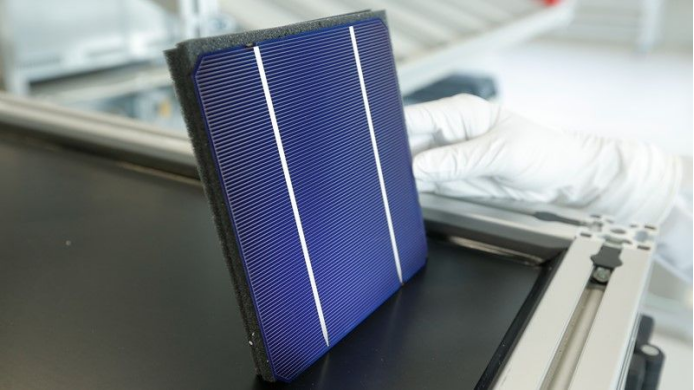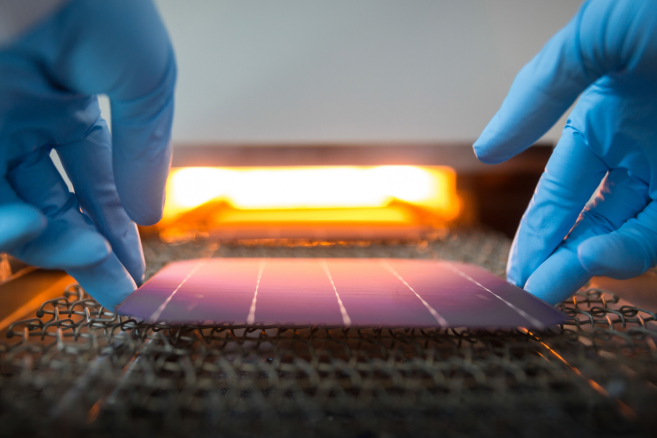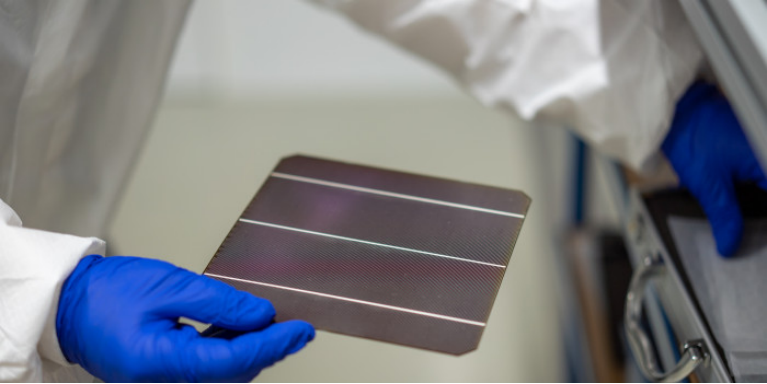
Quantum Efficiency Tester
PL/EL Integrated System
PV-Reflectumeter
3D Confocal Microscope
In-Line Four Point Probe Tester
Four Point Probe Tester
In-Line Thin Film Thickness Tester
Raman Spectrometer
FTIR Spectrometer
Spectrophotometer
Automatic Spectroscopic Ellipsometer
Contact Resistance Tester
Ultra depth of field 3D microscope
Auto Visual Tester
VMM PV Vision Measuring Machine
Solar Cell Horizontal Tensile Tester
Steady State Solar Simulator for Solar Cell
Solar Cell UV Aging Test Chamber
Solar Cell Comprehensive Tensile Tester
Visual Inspection Tester
Wet Leakage Current Tester
PV Module EL Tester
PV Module UV Preconditioning Chamber
Steady State Solar Simulator for PV Module
Current Continuous Monitor
Potential Induced Degradation Test
Bypass Diode Tester
LeTID Test System
Reverse Current Overload Tester
Impulse Voltage Tester
Hipot Insulation Tester
Ground Continuity Tester
Hipot Insulation Ground Tester
Damp Heat Test Chamber
Humidity Freeze Test
Thermal Cycle Test Chamber
Dynamic Mechanical Load Tester
Static Mechanical Load Tester
Hail Impact Tester
Robustness of Termination Tester
Module Breakage Tester
Cut Susceptibility Tester
Peel Shear Strength Tester
Universal Testing Machine (Single-arm)
Universal Testing Machine (Double-arm)
Glass Transmittance Tester
Acetic Acid Test Chamber
EVA Degree of Crosslinking Test System
Junction Box Comprehensive Tester
Drop ball tester
Semi-automatic scanning four-probe tester
Stylus Profilometer
Maximum Power Point Tracker
Perovskite Glass Transmittance Tester
Perovskite P1 Laser Scribing Multifunctional Testing Machine
Perovskite Online PL Tester
Perovskite Online Sheet Resistance Tester
Online Perovskite Film Thickness Tester
Perovskite Process Inspection Workstation
Portable IV Curve Tester
Portable EL Tester
Portable Thermal Imaging Tester
Solar Module Multi-Channel Testing System
PV Inverter Power Quality Tester
Drone EL Tester
IV Tester
IVEL Cell Sorting Machine
Effect of Annealing Process and Oxygen Content on the Properties of ITO Film
Date : 2024-01-17Views : 155
In the production process of solar cells, the annealing process and oxygen content as external conditions are often key factors that affect the performance of ITO films. Therefore, in order to improve the performance of ITO films to a higher degree, cell manufacturers will adopt rigorous operation methods in production. To ensure the improvement of its performance, and to use subsequent solar cell testing equipment to characterize whether its performance parameters meet production standards. The Spectrophotometer produced by Millennial Solar can help solar cell manufacturers scientifically evaluate performance and characterize their parameters after completion of production, thereby indirectly enabling solar cell manufacturers to improve cell performance.

Many factors that affect the ITO film during the annealing process
The annealing process refers to the heat treatment of the ITO film under certain temperature and time conditions to promote its grain growth, eliminate defects, increase grain boundary density and improve the conductivity and light transmittance of the film.
Effect of annealing temperature on the properties of ITO film
Annealing temperature is the most important factor affecting the performance of ITO films. Generally speaking, as the annealing temperature increases, the grain size of ITO films will increase, the grain boundary density will decrease, and the surface morphology will become smoother, resulting in a decrease in the resistivity of the film and an increase in light transmittance. However, when the annealing temperature is too high, the oxygen vacancies of the ITO film will be reduced, the carrier concentration will be reduced, and it will also cause oxidation and desorption of the film, resulting in an increase in the resistivity of the film and a decrease in light transmittance. Therefore, an appropriate annealing temperature needs to be selected to achieve optimal performance. Generally speaking, the most suitable annealing temperature is 200-500°C.
Effect of annealing time on the properties of ITO film
Annealing time is a secondary factor affecting the performance of ITO films. As the annealing time increases, the grain growth of the ITO film will be more complete, the grain boundary density will be higher, and the surface morphology will be smoother, resulting in a decrease in the resistivity of the film, the light transmittance is improved. However, when the annealing time is too long, it will cause too many oxygen vacancies in the ITO film and the carrier concentration will be too high. It will also cause oxidation and desorption of the film, resulting in an increase in the resistivity of the film and a decrease in light transmittance. Therefore, an appropriate annealing time needs to be selected to help the ITO film achieve optimal performance.
Effect of annealing atmosphere on the properties of ITO film
The annealing atmosphere is also one of the important factors affecting the performance of ITO films, and different annealing atmospheres will have different effects on the oxygen vacancy concentration and oxidation degree of the ITO film, resulting in changes in the resistivity and transmittance of the film. Normally, air, hydrogen, and nitrogen will affect the performance of ITO films. Air will cause the oxygen vacancies of the ITO film to decrease and the degree of oxidation to increase, thereby causing the resistivity of the film to increase and the light transmittance to decrease. Nitrogen is an inert atmosphere that will keep the oxygen vacancies and oxidation degree of the ITO film unchanged, resulting in the film's resistivity and transmittance remaining unchanged. Hydrogen is a reducing atmosphere, which will cause the oxygen vacancies in the ITO film to increase and the degree of oxidation to decrease, resulting in a decrease in the resistivity of the film and an increase in light transmittance.

Effect of Oxygen Content on ITO Film Properties
Oxygen content refers to the oxygen partial pressure or oxygen flow rate in the reaction chamber during the deposition process. It is another important factor affecting the performance of the ITO film, because it will affect the oxygen vacancy concentration and oxidation degree of the ITO film, thereby affecting its current carrying capacity concentration and electron mobility. Generally speaking, as the oxygen content increases, the oxygen vacancies of the ITO film will decrease and the degree of oxidation will increase, resulting in a decrease in carrier concentration and electron mobility, which will lead to an increase in the resistivity of the film and a decrease in light transmittance. However, when the oxygen content is too low, there will be too many oxygen vacancies in the ITO film and the degree of oxidation will be too low, resulting in a decrease in the resistivity of the film and an increase in light transmittance, but at the same time, the grain size of the film will become smaller. The grain boundary density becomes larger and the surface morphology becomes rough, thus affecting the stability and reliability of the film.

If you want to measure the precise parameters of the light transmittance and conductivity of ITO films, you can use the Spectrophotometer produced by Millennial Solar to test it. This equipment has the top functions in the solar cell testing industry and can help solar cells by testing solar cells. Cell manufacturers and photovoltaic enterprise users can more conveniently and scientifically put solar cells deposited with thin-film materials into actual use, thereby facilitating their efficient production and rational use!

































































